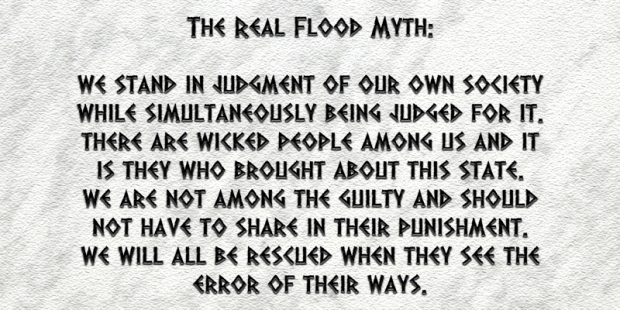“History became legend, legend became myth…”
— Galadriel, Lord of the Rings, J. R. R. Tolkien
It is unfair to myth to let it become a mere synonym of error and/or antiquated, foolish notions. Joseph Campbell includes the following in description of term and its true function: “A ritual is the enactment of a myth.”
Rites serve civilization as on-the-job training for establishing the connection of individual to the social environment. Ritual dramatizes recognition – in the sense of both comprehension and the act honoring. Such practices serve as a foundation to assess our culture and, hopefully, to understand our talent and role within it. Myth is instructional metaphor intended to build sameness and community not bring it to raze and ruin. Ritual and mythology are far from absent in today’s society.
The word and its importance are being abused. At least half the time it is seen on the internet it is pressed into service as part of clickbait. “Ten Myths About…” is, more often than not, the beginning of an attempt at indoctrination – leading the reader away from genuine truth. This usage is propaganda not a mechanism that may imbue a person with effectiveness.
Myth and ritual used this way is exploitation of the trusting souls and their beliefs. Those who engage in this misuse view their targets as dupes and rubes; that’s exactly the strategy of a cult.
There is a dichotomy in how we view ancient civilization. In terms of their religion we represent them as naïve primitives without the sophistication to understand plainly stated morals given after highly stylized tales. Yet at the same time we laud the same people as the inventors of our celebrated ideas of republic and democracy. “Behold the gullible genius!”
The larger-than-life tale is best used as mnemonic device or as an attention-getting preface. In contrast the hoax and the bold-faced lie depend on reaching the impressionable.
For both the individual and society resisting indoctrination depends on enough introspection to know what we believe and why. We must maintain our memory (and history) properly fit and exercise due diligence to confirm new information before writing it into our memory as actual fact.
Critical thinking is our best tool after domesticated fire and the wheel. Healthy skepticism, however, is not the same as ineducable suspicion. Willful opposition to new data is deplorable embrace of ignorance. As a practice that is certain to earn us a reputation as superstitious post-Neanderthals.

In 139ᴀᴅ Ptolemy is said to have produced a map of the demi-continent called Taprobane (Ταπροβανῆ). There is no evidence that he traveled across the Indian Ocean nor any account of his having been asked to describe any such journey. Still, for centuries others copied the gigantic island onto newer maps and expeditions hoped to find it.
Orson Welles’ radio adaptation of The War of the Worlds is famous due to the panic it caused. Following a similar dramatization in Quito, Ecuador on 12 Feb 1949 the aftermath was greater. As many as twenty people were killed. There is no record in either case of people simply changing the station.
Myth is not error or falsehood. Mistakes are mistakes and lies are lies. We are the vanguard against the latter armed with the former when properly understood and utilized.
Or else —
Five centuries from now will John McCain be on his way to being regarded as the builder of the Panama Canal and began construction of the Great Wall on the southern border of The United States of New Laurentia. Will the senator’s maverick nature eventually inflate his image to the equivalent of a Trickster god?
And how much truth will be salvaged about McCain by any euhemerism at the end of the next millennium?
☄





